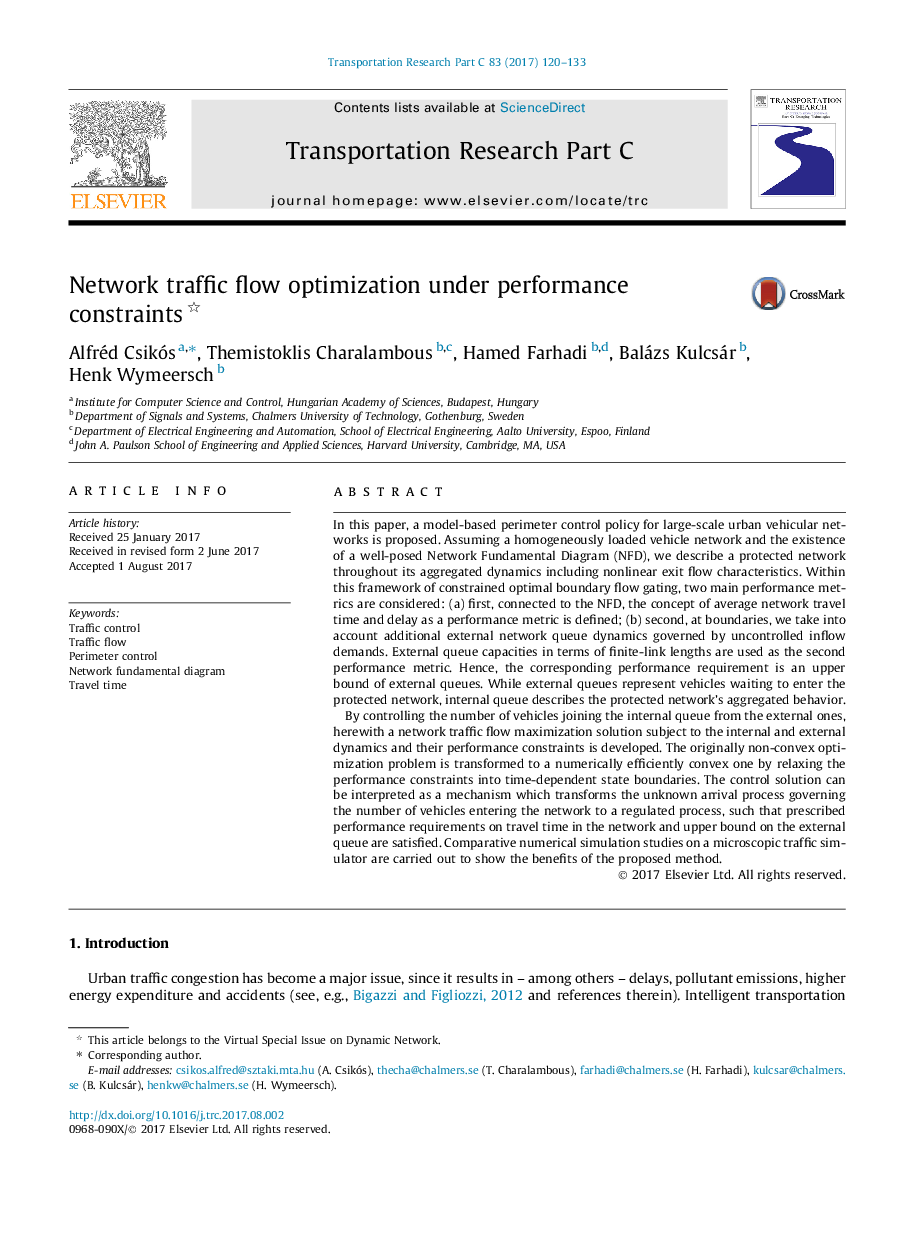| Article ID | Journal | Published Year | Pages | File Type |
|---|---|---|---|---|
| 4968473 | Transportation Research Part C: Emerging Technologies | 2017 | 14 Pages |
Abstract
By controlling the number of vehicles joining the internal queue from the external ones, herewith a network traffic flow maximization solution subject to the internal and external dynamics and their performance constraints is developed. The originally non-convex optimization problem is transformed to a numerically efficiently convex one by relaxing the performance constraints into time-dependent state boundaries. The control solution can be interpreted as a mechanism which transforms the unknown arrival process governing the number of vehicles entering the network to a regulated process, such that prescribed performance requirements on travel time in the network and upper bound on the external queue are satisfied. Comparative numerical simulation studies on a microscopic traffic simulator are carried out to show the benefits of the proposed method.
Related Topics
Physical Sciences and Engineering
Computer Science
Computer Science Applications
Authors
Alfréd Csikós, Themistoklis Charalambous, Hamed Farhadi, Balázs Kulcsár, Henk Wymeersch,
